The Greener View: Bad Advice About Garden Soil
In honor of April Fools' Day, let's take a look at some foolish advice gardeners sometimes get and give about garden soil.
No. 1: Throwing banana peels or eggshells around the base of potted plants or your garden vegetables will help the plants grow.
Let's look at the reasoning. Banana peels contain a lot of potassium, and eggshells contain calcium. Leaving your food waste garbage on the soil surface can attract flies, gnats, cats and rats. If you dig a little hole and bury the garbage, will that help?
The nutrients plants get from soil are chemical molecules that are dissolved in water. That means the garbage must decay into water soluble chemicals before a plant can use them. The bacteria that break down the food waste consume nitrogen and other nutrients in the soil. By putting food in the flowerpot or soil around your plants, you are depriving plants of the nutrients they need. Put these items in a compost pile so they can break down into the nutrients that plants can use, and then add the compost to the soil around your plants.
No. 2: Adding eggshells to the soil around tomatoes will prevent blossom end rot (BER).
BER is a called a disease but a physical problem some plants develop when calcium is not available in the plant when it is producing fruit. There is usually plenty of calcium in the soi,l but during certain stages of growth, the plant doesn't move it from the soil to the fruit. Adding calcium to the soil doesn't prevent BER, and adding eggshells doesn't add calcium fast enough to have any effect.
No. 3: Adding sugar to the soil around my tomatoes will make them sweeter.
Nope, all you will do is feed bacteria and fungi. Plants create their own sugars. If you want a sweet tomato, get varieties that are genetically designed to store more sugar in the fruit.
No. 4: Epsom salt will help my plants.
Epsom salt is magnesium sulfate. If your garden soil has been tested and needs magnesium or sulfur, you could add some Epsom salt, but other garden ready products do a better job. Otherwise, you are poisoning the soil with salt.
No. 5: Coffee grounds will make the soil more acidic.
There is a little bit of truth to this one as coffee grounds are just barely acidic. If you add a lot of coffee grounds to the garden soil, you can lower the pH temporarily. This should only be done if a soil test shows the pH needs to be lower, and tests should be done regularly to watch the progress so you don't over do it. Only some plants that need acidic soil will benefit, and the rest of the plants will be harmed by a lower soil pH. As coffee grounds decay, they become more neutral in pH, so they become useless for lowering pH; that is why you will need a lot of coffee grounds.
No. 6: Adding gravel to the bottom of a tree planting hole will increase drainage to prevent the tree from drowning.
Look at a hole for a tree you are planting. Add some gravel to the bottom of the hole. Now, tell me where the water is going to drain away to. If the soil does not have good enough drainage for the tree to grow, you are planting the wrong kind of tree.
No. 7: How about gravel in the bottom of flowerpots?
First, answer these questions. How much gravel, how big are the gravel pieces and what kind of soil is above the gravel? Water moves through pores in the soil like it does in a sponge. When it gets to an air gap like holding the sponge in the air, it stops flowing until enough water above the air gap can push the water into the air gap, like drips coming off the bottom of the sponge.
If not much soil is in contact with the gravel, it will be harder to overcome the surface tension holding the water above the air gap and the soil above the gravel will stay wet. If the soil is added in a kind of messy way where a lot of soil contacts the gravel, the water will flow down into the gravel much more easily and drain out of the pot, leaving the soil drier.
There is always wetter soil at the bottom of a flowerpot than at the top. Gravel in the bottom tends to move the waterlogged soil higher into the pot. Gravel is also not soil, so there is less soil for the plant roots to grow in.
========
Email questions to Jeff Rugg at info@greenerview.com. To find out more about Jeff Rugg and read features by other Creators Syndicate writers and cartoonists, visit the Creators Syndicate website at www.creators.com.
Copyright 2025 Jeff Rugg. Distributed By Creators.

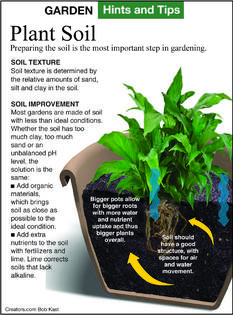
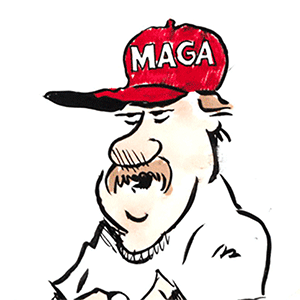
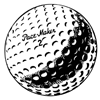
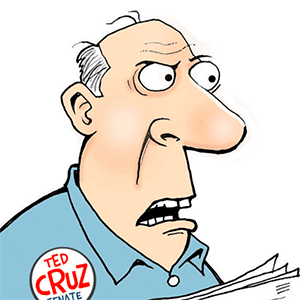
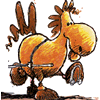


Comments